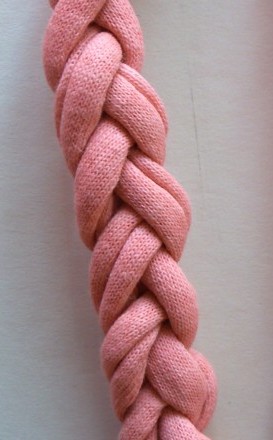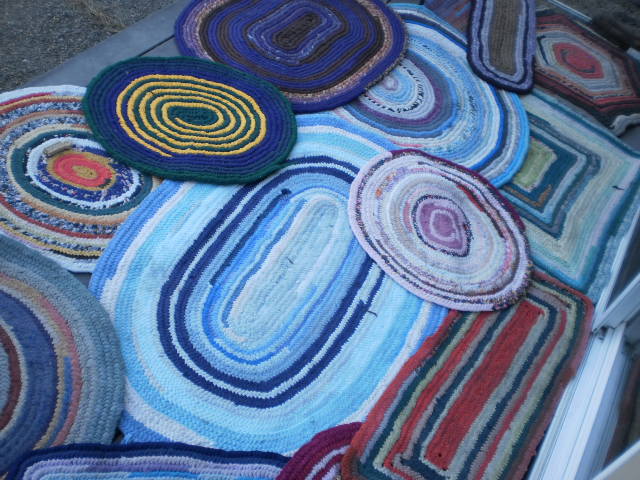The term “toothbrush rugs” dates from the era of toothbrushes made with wooden handles. The brush end was cut off and the handle converted to a large wooden needle. It was these needles that were used to make the rugs.
Prior to the 1980s, the term was only applied to naalbinding rugs. However, in that decade, a company called “Aunt Philly’s Toothbrush Rugs” began to apply the term to Amish knot rugs as well. While the techniques both use large needles, they really aren’t closely related structurally.
In recent years the technique of naalbinding in all sorts of variations has enjoyed a revival of sorts since it is a period correct form of needlework with re-enactors of medieval activities. Naalbinding is typically used with yarns to make bags, mittens, vests, etc., but since the middle 1800s, it was also used for rug making.
Over the years, naalbinding presented something of a puzzle to me. It’s structure is relatively complex and certainly not what I refer to as an “intuitive” technique, which is more typical in rugs. Naalbinding itself is an ancient art with prehistoric roots, so my working theory was that naalbinding evolved from a simpler method. A secondary question arose in researching old references to the technique. The old rugs were described as beginning with a three-strand standard braid. This is also not typical of rugs.
 Some years ago, while researching the varieties of false braids, I came across a needle-made false braid (“naraflata”) which creates a structure that closely resembles a three-strand braid.The naraflata is shown at the left in the photo.
Some years ago, while researching the varieties of false braids, I came across a needle-made false braid (“naraflata”) which creates a structure that closely resembles a three-strand braid.The naraflata is shown at the left in the photo.
Made with a single strand, the naraflata can be made as a free braid and is a simple structure made using a large needle. When I experimented with it as an “attached” braid (lacing it into itself) the resulting rug was so close in appearance to naalbinding that only a very close inspection would reveal the difference.
It is my conclusion that the naraflata technique had been forgotten and replaced with the three-strand braid in rug making because it was so similar in appearance.
The naraflata is also such a simple, basic textile structure, it does qualify as an “intuitive” technique and so is the likely ancestor of the more elaborate naalbinding stitches.

Recently, I was contacted by Jackie Fish, a rugmaker from Oregon who teaches naalbinding rugs at the University of Oregon Craft Center in Eugene, Oregon. She has graciously offered to share pictures of her rugs (shown above). Jackie can be contacted at jkalmia07@gmail.com if you have questions about her rugs or classes.
Publications in our Catalog:
Sorry, not yet…
Other Publications
Nalbinding, What in the World is That? is a 2015 book by Ulrike ClaBen-Buttner (available on amazon). It is a translation from the original German with extensive archeological information about nalbinding as well as directions and patterns for various yarn projects (slippers, bags, hats, etc.)